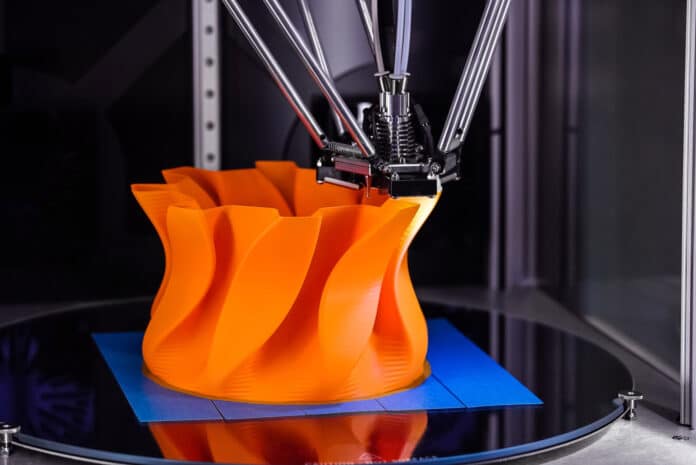In recent years, 3D printing technology has revolutionized various industries by offering cost-effective, customizable, and rapid prototyping capabilities. One remarkable development in the realm of robotics is the advent of 3D-printed grippers, enabling versatile manipulation tasks in automation and manufacturing processes.
Conventional robotic grippers often rely on complex electronic systems for control and actuation. However, a groundbreaking innovation has emerged – a 3D-printed gripper that operates efficiently without needing electronics.
This study explores the design, mechanics, and applications of this electronics-free 3D printed gripper, which promises to significantly impact the field of robotics and expand the accessibility of robotic solutions to a broader range of users. Through a detailed analysis of its functionalities and performance, this research sheds light on the potential implications of this novel gripper design and its possible integration into real-world applications.
Developed collaboratively by roboticists at the University of California San Diego and researchers from BASF corporation, this groundbreaking soft robotic gripper represents a paradigm shift in the world of robotics.
Uniquely, the gripper is 3D printed in one piece, eliminating the need for electronic components to operate seamlessly. The innovation is detailed in a recent issue of Science Robotics, showcasing its exceptional capabilities, including built-in gravity and touch sensors. With the ability to pick up, hold, and release objects, this one-of-a-kind gripper fills a crucial void in the robotics domain, opening new avenues for versatile and accessible automation solutions.
Yichen Zhai is a postdoctoral researcher in the Bioinspired Robotics and Design Lab at the University of California San Diego and the leading author of the paper, which was published in the June 21 issue of Science Robotics. Said, “We designed functions so that a series of valves would allow the gripper to both grip on contact and release at the right time. It’s the first time such a gripper can both grip and release. All you have to do is turn the gripper horizontally. This triggers a change in the valves’ airflow, releasing the gripper’s two fingers.”
It introduces the groundbreaking robotic gripper incorporating fluidic logic, capable of memorizing its grasp on objects and responding intelligently to weight shifts. As it transitions to a horizontal position, it effortlessly releases things by detecting lateral pressure – all without the need for electronics, streamlining its design and operation.
This versatile gripper finds applications in industrial manufacturing, food production, research, and exploration, ensuring safe interactions with humans and delicate objects through soft robotics principles. Its untethered operation, powered solely by a high-pressure gas bottle, enhances practicality and mobility. Overcoming common challenges faced by 3D-printed soft robots, this gripper is flexible, leak-free, and requires minimal post-processing and assembly. This electronics-free gripper represents the future of soft robotics, marking a new era of efficient and user-friendly automation solutions.
His team achieved remarkable progress by developing a novel 3D printing technique, where the printer nozzle continuously traces a path throughout each printed layer, akin to drawing without lifting the pencil. This innovation effectively addresses common issues like leaks and defects in soft material printing.
Moreover, the method enables printing thin walls, as slim as 0.5 millimeters, allowing for more significant deformation and resulting in a softer structure. Inspired by the Eulerian path from graph theory, this approach ensures consistent printing of functional pneumatic soft robots with embedded control circuits, as confirmed by Michael T. Tolley, the paper’s senior author and an associate professor at UC San Diego Jacobs School of Engineering.
The electronics-free 3D printed gripper represents a remarkable advancement in robotics, showcasing the potential of fluidic logic and intelligent grasping in automation tasks. By overcoming the limitations of traditional grippers and 3D-printed soft robots, this innovative design paves the way for efficient, user-friendly automation solutions across various industries. As further developments emerge, this study offers valuable insights into the future of soft robotics and its expanding role in transforming automation technologies.
Journal Reference:
- YICHEN ZHAI, ALBERT DE BOER et al., Desktop fabrication of monolithic soft robotic devices with embedded fluidic control circuits. Science Robotics. DOI:10.1126/scirobotics.adg3792.
